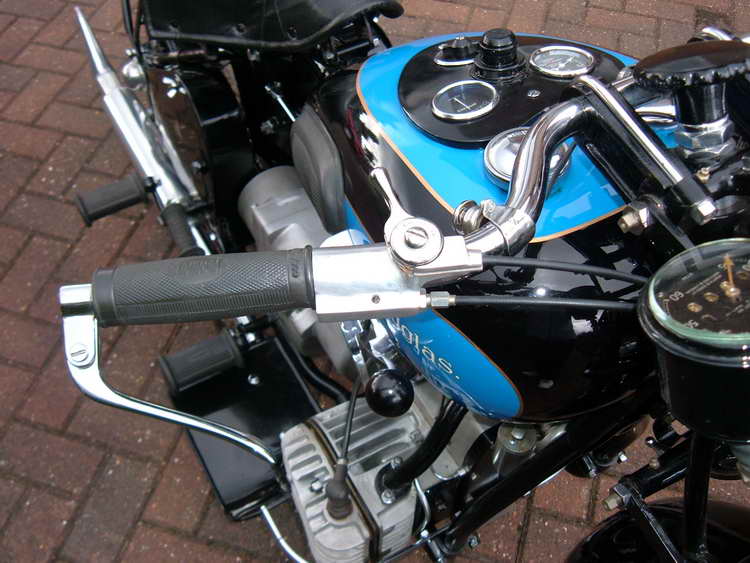My Endeavour was purchased almost complete and in very original albeit poor condition with bent forks, a broken and twisted frame and extensive corrosion. The forks were also very badly worn with the spindles down to almost half their original diameter. One fork link had broken across the spindle hole so a new hole had been drilled half an inch back and the link replaced on its spindle so that the links were different lengths on each side. Imagine the dynamics of fork movement!
The crankshaft was beyond repair as the webs were loose on the crankpins (integral with the centre web). Attempts had been made unsuccessfully to tighten them by centre punching pop marks all over the pin ends where they should be a press fit in the web. I was given an Aero crank shaft which I pulled apart and drilled to provide the Endeavour lubrication system. This takes oil from a spring loaded quill in the timing chest cover through the front shaft, then through an angle drilling in the front web into a small bore through the side wall of the front crankpin where it mates with an angular drilling through the centre web. Another angular drilling from the other end of the centre web meets the first drilling at the centre of the web. These angular drillings are started and set so that a cross drilling into these from each side of the centre web breaks into them at a position to correspond with the big end cages. This is a critical exercise as the centre web is only a few thou. over 3/8 thick. The outer ends of the angular drillings are then tapped and sealed with grub screws.
The Aero models have no drillings as oil is fed though a gallery quill to squirt oil into cut outs on the rotating centre web.
On the initial build I retained the original cork clutch but this was found to drag badly so following advice from another LDMCC member, I have now fitted Ferodo discs which has transformed handling from a standing start and gear changing.
Apart from this modification, the provision of a modified oil pump which has a 50% greater scavenging capacity, provision of a tap in the main oil feed to prevent wet sumping, use of a modern 3 bearing to replace the Douglas special crowded roller main bearing in the rear wheel drive and the introduction of a Sunbeam S7 universal joint in the drive shaft, the machine is remarkably original with its Lucas ammeter, Eureka 15psi oil pressure gauge, detachable inspection lamp with over 1 metre of silk covered twin flex, 8 headlamp, reverse clutch and front brake levers, the Douglas alloy straight pull twist grip incorporating the air lever, the original three brush dynamo, correct Clearhooter horn, Douglas Motors Ltd tyre pump and footshields. Note also the original twin toolboxes fitted only to early production models. The right hand toolbox has a scalloped rear surface to clear the shaft drive.
It is a very pleasant machine to ride with a surprisingly good performance.





